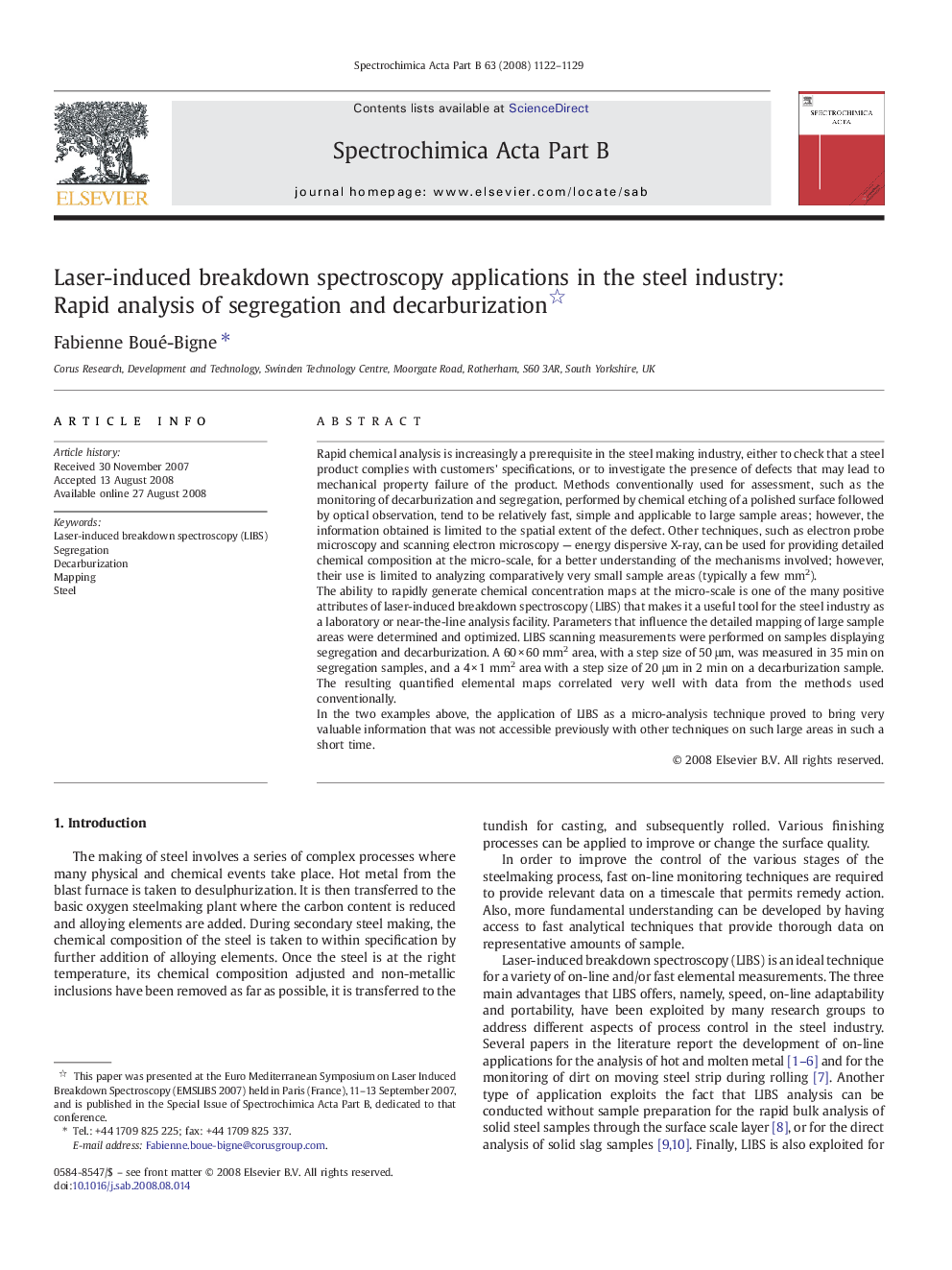| Article ID | Journal | Published Year | Pages | File Type |
|---|---|---|---|---|
| 1241250 | Spectrochimica Acta Part B: Atomic Spectroscopy | 2008 | 8 Pages |
Rapid chemical analysis is increasingly a prerequisite in the steel making industry, either to check that a steel product complies with customers' specifications, or to investigate the presence of defects that may lead to mechanical property failure of the product. Methods conventionally used for assessment, such as the monitoring of decarburization and segregation, performed by chemical etching of a polished surface followed by optical observation, tend to be relatively fast, simple and applicable to large sample areas; however, the information obtained is limited to the spatial extent of the defect. Other techniques, such as electron probe microscopy and scanning electron microscopy — energy dispersive X-ray, can be used for providing detailed chemical composition at the micro-scale, for a better understanding of the mechanisms involved; however, their use is limited to analyzing comparatively very small sample areas (typically a few mm2).The ability to rapidly generate chemical concentration maps at the micro-scale is one of the many positive attributes of laser-induced breakdown spectroscopy (LIBS) that makes it a useful tool for the steel industry as a laboratory or near-the-line analysis facility. Parameters that influence the detailed mapping of large sample areas were determined and optimized. LIBS scanning measurements were performed on samples displaying segregation and decarburization. A 60 × 60 mm2 area, with a step size of 50 μm, was measured in 35 min on segregation samples, and a 4 × 1 mm2 area with a step size of 20 μm in 2 min on a decarburization sample. The resulting quantified elemental maps correlated very well with data from the methods used conventionally.In the two examples above, the application of LIBS as a micro-analysis technique proved to bring very valuable information that was not accessible previously with other techniques on such large areas in such a short time.
